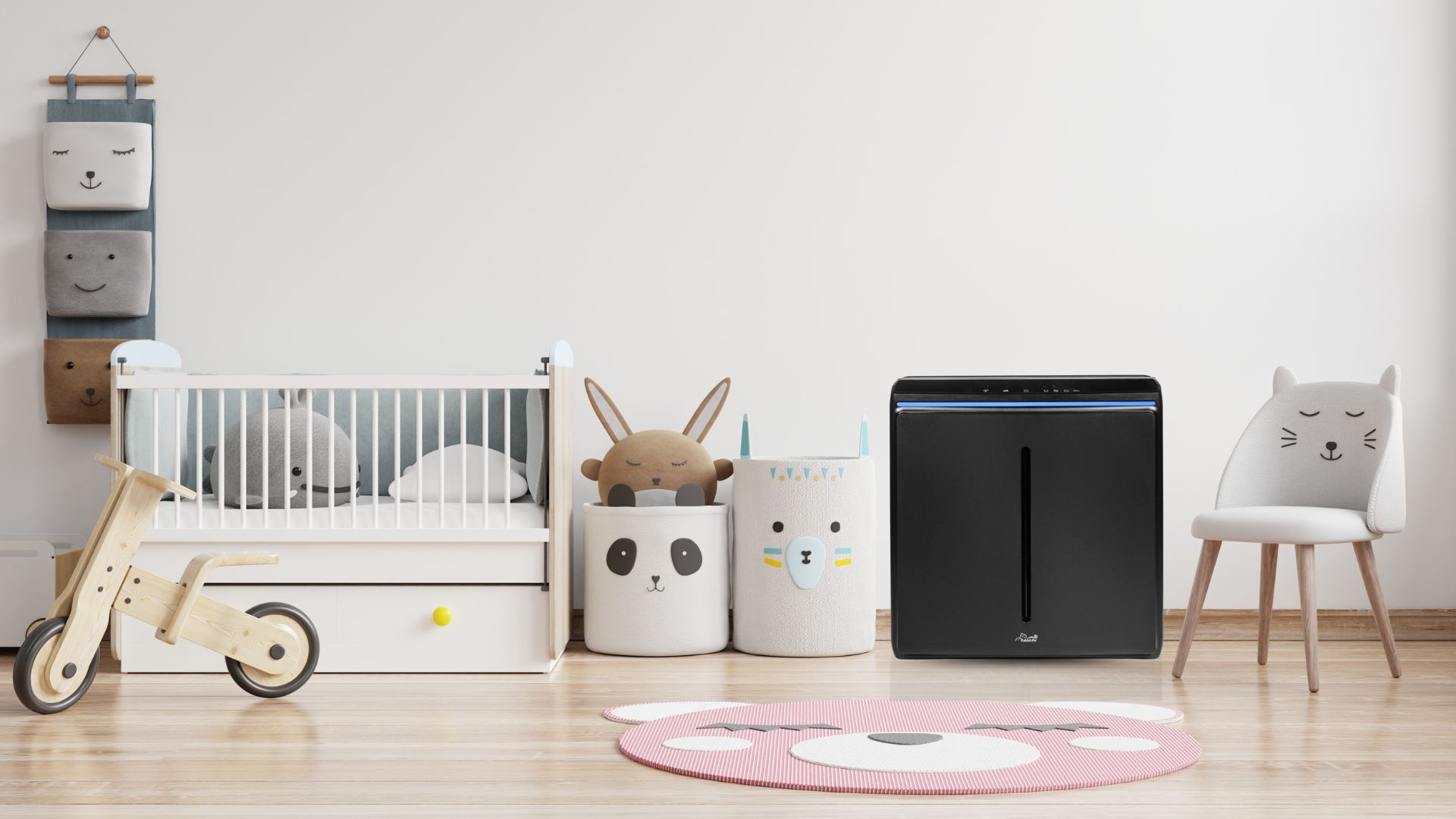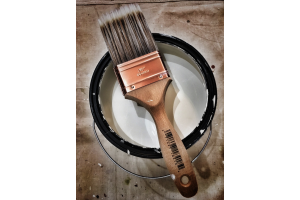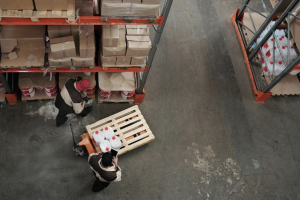Simple Ways to Keep the Air Clean When You Have a New Baby at Home

When you bring your baby home, you want everything to be perfect: the crib, the blankets, the bottles, the lullabies. But what about the air they breathe? While it’s easy to focus on what you can see and touch, the air quality in your home can quietly impact your baby’s health, especially during those early, sensitive months.
Newborns breathe more often than adults, and their lungs are still developing, making them more vulnerable to airborne pollutants. Dust, smoke, VOCs (volatile organic compounds), and even lingering odors from everyday products can affect their breathing and comfort.
The good news is you don’t need to turn your home upside down to create a safer breathing space. Simple adjustments, like choosing natural products and using a reliable smoke eater, can make a big difference in giving your baby the healthiest start possible.
Why Clean Air Matters More for Babies
Newborns take 30 to 60 breaths per minute, compared to an adult's 12 to 20. That means they’re pulling in more air and whatever’s in it every single moment. Their immune systems are still developing, and they don’t have the same defenses against airborne irritants like we do.
Dust mites, mold spores, pet dander, off-gassing from new furniture or paint, and secondhand smoke can all linger in indoor air, even if your home feels clean. And while you might not notice them, your baby’s tiny lungs do.
Respiratory issues like wheezing, congestion, or even long-term risks like asthma can all be aggravated by poor indoor air quality. That’s why proactive steps early on are worth every effort.
Start with an Air Purifier (Especially in the Nursery)
If there’s one step that gives you the biggest return with the least amount of daily work, it’s investing in a quality air purifier. It works continuously in the background, pulling in airborne irritants and filtering them out quietly, creating a cleaner space for your baby to sleep, feed, and grow.
For nurseries or shared spaces like a family room, look for purifiers with:
- True HEPA filters, which capture dust, dander, and allergens
- Activated carbon filters, which absorb odors and VOCs
- Quiet operation, ideal for nap and nighttime use
- Child-safe design, with no exposed buttons or small parts
Your Elegant Bar offers a handpicked collection of air purifiers that are effective enough to protect your home but stylish enough to blend into your nursery setup. Whether you’re dealing with smoke from outside, city pollution, or just want to ensure better indoor air, there are compact options perfect for your baby’s room.

Switch to Baby-Safe Cleaners
Many conventional cleaning products contain ingredients like ammonia, chlorine, and artificial fragrances, all of which release VOCs into the air. These harsh fumes don’t just disappear after you spray them. They linger, settle on surfaces, and become part of your baby’s breathing environment.
Look for:
- Plant-based or fragrance-free cleaners
- DIY cleaning solutions, like vinegar and baking soda, for surfaces
- Hypoallergenic laundry detergents, especially for bedding and clothing
Tip: Even “natural” or “green” brands can contain irritating ingredients. Always read labels, and when in doubt, go with products made specifically for baby use.
Keep Dust Under Control
You’d be surprised how quickly dust accumulates on bookshelves, baseboards, inside heating vents, and especially under furniture. Dust isn’t just dirt; it’s often made of skin cells, fabric fibers, and allergens that can irritate delicate lungs.
Here’s how to manage it:
- Vacuum regularly with a vacuum that has a HEPA filter
- Dust with a damp cloth, not a dry one, so particles don’t float into the air
- Wash curtains and crib skirts every few weeks
- Skip clutter in the nursery that traps dust (stuffed animals, extra pillows)
This helps ensure the air and the surfaces your baby crawls on stay fresher and healthier.
Open the Windows (Smartly)
Fresh air is one of the simplest tools you have. Even just 15 minutes a day of opening windows can help cycle out stale indoor air and lower the levels of indoor pollutants.
But timing matters. If you live near a busy road, wait until traffic dies down. Avoid opening windows during high-pollen days if your family has allergies. And always double-check outdoor air quality on poor AQI days, especially during wildfire season or heavy pollution alerts.
When outdoor air isn’t ideal, your air purifier becomes even more essential.
Skip Scented Candles and Air Fresheners
That soft lavender candle might make your home feel cozy, but it could also be releasing synthetic fragrance compounds into the air. Air fresheners, plug-ins, and incense often contain phthalates and other chemicals that contribute to indoor air pollution.
Instead, try:
- Essential oil diffusers (with baby-safe oils and minimal use)
- Natural beeswax candles, which are cleaner burning
- Baking soda jars to neutralize odors
But truly, the best scent is no scent. If your air smells fresh without needing cover-ups, that’s the healthiest sign of all.
Watch for Smoke or Secondhand Exposure
Even if no one smokes inside your home, smoke can still find its way in. It can cling to clothing, drift in from outside neighbors, or linger near open windows or entrances. If you or someone in the household smokes even outside, it’s worth taking extra precautions to prevent it from affecting your indoor air.
In these cases, a smoke eater or purifier with a strong odor and particulate filtration becomes crucial. These devices are designed specifically to capture the small particles found in tobacco or cooking smoke and can help neutralize any lingering exposure, especially in shared rooms or near windows.
Take Off your Shoes at the Door
It’s a simple habit that has a big impact. Shoes bring in dirt, bacteria, and pollutants from the outside world, including pesticides or smoke particles clinging to sidewalks.
Set up a small shoe station near the entrance. It keeps floors cleaner and reduces what gets stirred up into the air, especially important once your baby starts crawling.
Consider Your Home’s Materials
If you’re in the process of setting up your nursery or making updates, keep air quality in mind as you choose:
- Low-VOC paint, adhesives, and furniture finishes
- Solid wood furniture instead of particleboard (which can off-gas formaldehyde)
- Natural fiber rugs, like cotton or wool, instead of synthetic ones
- Washable curtains instead of plastic or vinyl blinds
These choices may not seem urgent, but over time, they reduce the load of chemicals released into your home environment.
Don’t Forget Humidity Control
Babies are sensitive to dry or damp air. Too dry, and it can irritate their nasal passages. Too humid, and it invites mold and mildew.
Aim to keep your indoor humidity between 30% - 50%. A small humidifier can help during winter, while a dehumidifier is useful in warmer months or damp spaces like basements.
Some air purifiers also come with built-in humidity control, which adds convenience and balance to your setup.
Final Thoughts
Clean air may not be something you see, but it’s something your baby feels every breath, every nap, every snuggle. With just a few thoughtful changes and a good air purifier, you can create a safer, more comfortable space for your growing family.
Your Elegant Bar offers options that not only work quietly in the background but also complement the style and calm of your nursery. Because when your baby sleeps peacefully, so can you.






